(MENAFN- ING) European countries have been plagued by a persistent medicine shortage for the past few years. supply chain disruptions and increased demand are driving the shortfall. There are potential solutions. And one
could involve breeding a whole lot more crabs
In this article What crabs tell us about
Pharmaceutical supply chains Generic supply chains are more vulnerable than proprietary ones The dependence on generic drugs is rising What can European
governments do? Possible benefits of reshoring We're going to feel worse, before we might feel better

The blood of the horseshoe crab is used to test medicines and illustrates the fragility of pharmaceutical supply chains What crabs tell us about pharmaceutical supply chains
The supply of medicine worldwide often relies on chemical wizardry, rare materials, and deeply convoluted supply chains. And nothing illustrates the complexity more than the fate of the South Carolina horseshoe crab.
Bear with us. The blood of this unfortunate creature is the only non-synthetic source of limulus amebocyte lysate, LAL for short. It's a substance that detects endotoxin, a deadly chemical that is produced by bacteria. The pharmaceutical industry uses this crab blood to ensure the safety of all kinds of medicines, from vaccines to insulin, along with implanted devices, such as heart stents.
So far, so bad for the horseshoe crab. But then Covid happened. Demand for vaccines soared, as did the need for more crab blood. And they couldn't be bred fast enough. As crab numbers fell dramatically, the US biomedical sector, in particular, is still facing a chronic shortage. And here's why this matters and why this crustacean is emblematic of a far wider problem for the global pharmaceutical industry. More than half of injectable medicines and implanted devices are tested using this horseshoe crab blood. And a desperate shortage shows us just how fragile supply chains in this sector are.
This fragility, along with increasing global demand and lower prices in Europe than in the US, explains the persistent drug scarcity in Europe. The Netherlands is a case in point; the country's medicine shortage has steadily increased over the past few years and will continue to do so for the foreseeable future.
So what's the solution? Reshoring is a viable medium-term option, but it's going to require extra investments, possibly at the cost of efficiency. And that's what we're going to be delving into in this report.
Medicine shortage in the Netherlands
Number of times pharmacists had to tell patients a medicine was not available
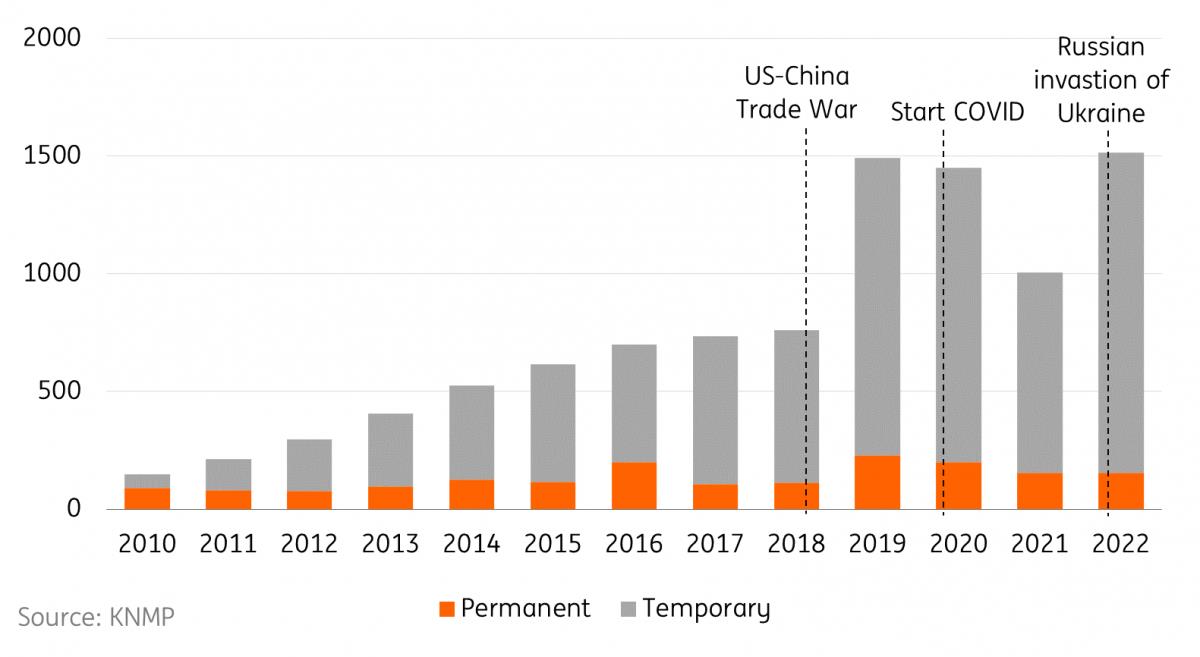
Here's another fun fact: the average medicine travels around the world twice before ending up on the shelves of local pharmacies. It's a feature of these complex supply chains. Materials are sourced from every corner of the globe, distribution is often 'just in time' to keep costs at a minimum, and production takes place in a few highly specialised factories. It's worth pointing out there are only four global suppliers of the antibiotic benzathine penicillin G, and there are repeated shortages, for example.
This means that stocks of medicines tend to be low or non-existent because producers, governments and healthcare providers are not willing to pay the costs of additional inventory. Any misstep in the production and distribution process immediately leads to a global shortage of certain medicines. And here's the bottom line: distribution and production combined explain 65% of drug shortages.
Other factors also play a role. Demand for medicine has increased due to an ageing population and a rise in chronic illnesses in developed countries. Improved access to healthcare in developing countries with their increased wealth and rising populations also play a part, as do changes in quality controls and regulation shortages of raw materials.
Reasons for medicine shortages
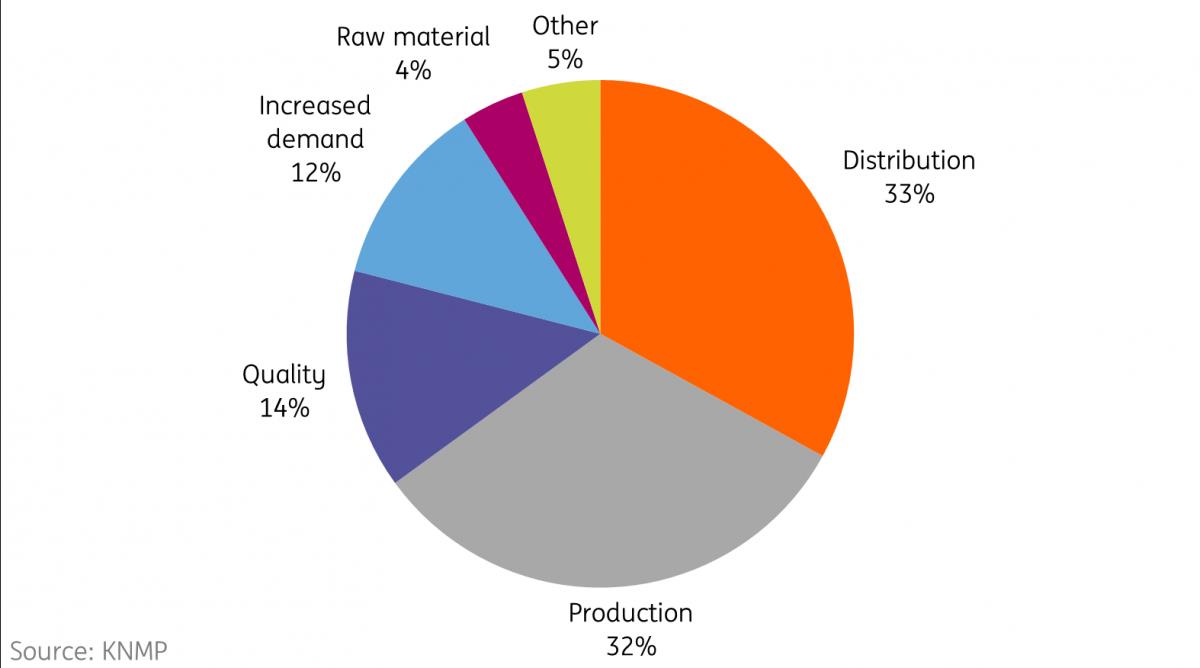
Generic supply chains are more vulnerable than proprietary ones
Although the supply chains of proprietary drugs, those medicines with a patent, experience the same problems as generic ones, problems in generic supply chains are more pronounced. Blame stiff competition for generics, razor-thin margins and short-term contracts. And the production of proprietary and generic drugs requires different expertise. This makes their production uninteresting for pharmaceutical companies which focus on proprietary medications.
So, it is no surprise that we have recently seen spin-offs of Sandoz, Viatris and Zentiva. The companies that do produce generic medicines generally offshore production to countries with comparatively low wages and less stringent regulatory standards and are hence dependent on one or two highly specialised factories. These are often located in India or China, as you can see below.
Share of production for European market of important generic drugs
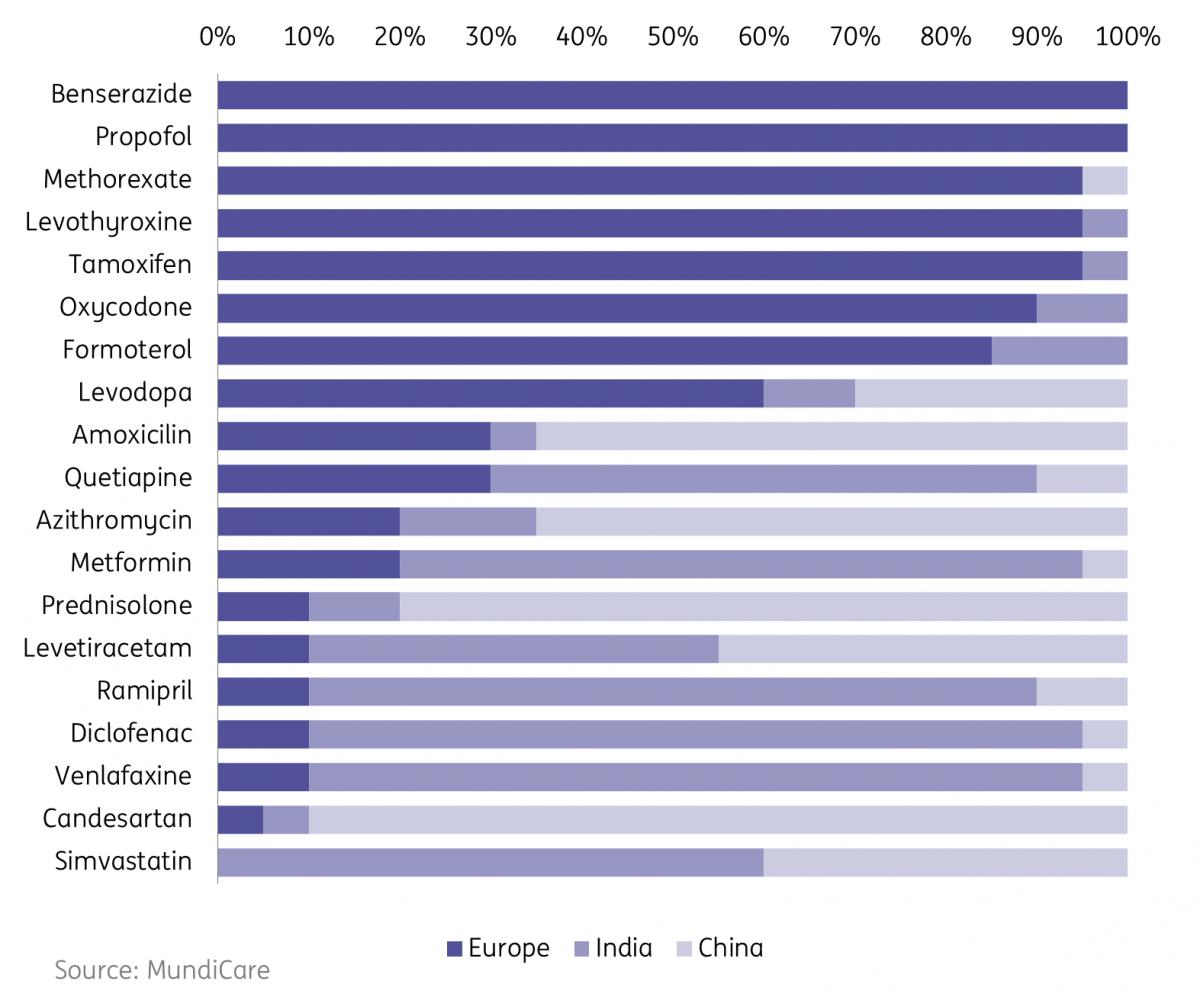
The dependence on generic drugs is rising
At the same time, the share of generic drugs as a percentage of total prescriptions has risen dramatically because of the increased focus on the cost of healthcare and patent expiration of top-selling branded drugs. Between 2022 and 2026, another 26 blockbuster drugs, those with more than $1bn in sales, go off patent, along with 1,501 small-molecule drugs (according to KPMG). That leads to an even larger percentage of prescription drugs becoming generic.
In 1984, the percentage of generic prescriptions in the US was 19%; it was 91% in 2022. This huge proportion only accounted for 32% of revenue. The figures are similar in Europe. So, an increasing number of prescriptions are generic medicines, which means decreasing costs but a more significant dependence on drugs with more fragile supply chains than proprietary ones. Hence, this increases the risk of a drug shortage.
Share of generic medicines as percentage of prescriptions in the US
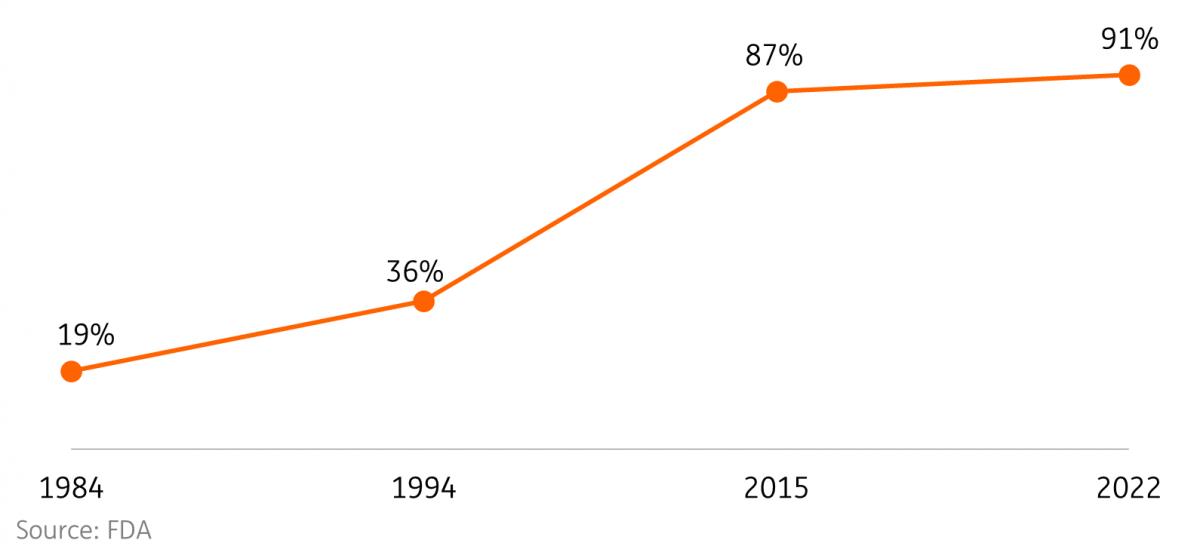
KNMP
However, it is not just the reliance on generic drugs that causes the medicine shortage as the existing problems with pharmaceutical supply chains were exacerbated by Covid. Naturally, supply chain disruptions caused by lockdowns also affected the highly globalised pharmaceutical industry. As a result, the import of medicines by the EU fell significantly from 2020 to 2021, increasing the shortage of medicines further.
Supply chain pressure spiked due to Covid
Measurement of supply constraints that influence global economic outcomes
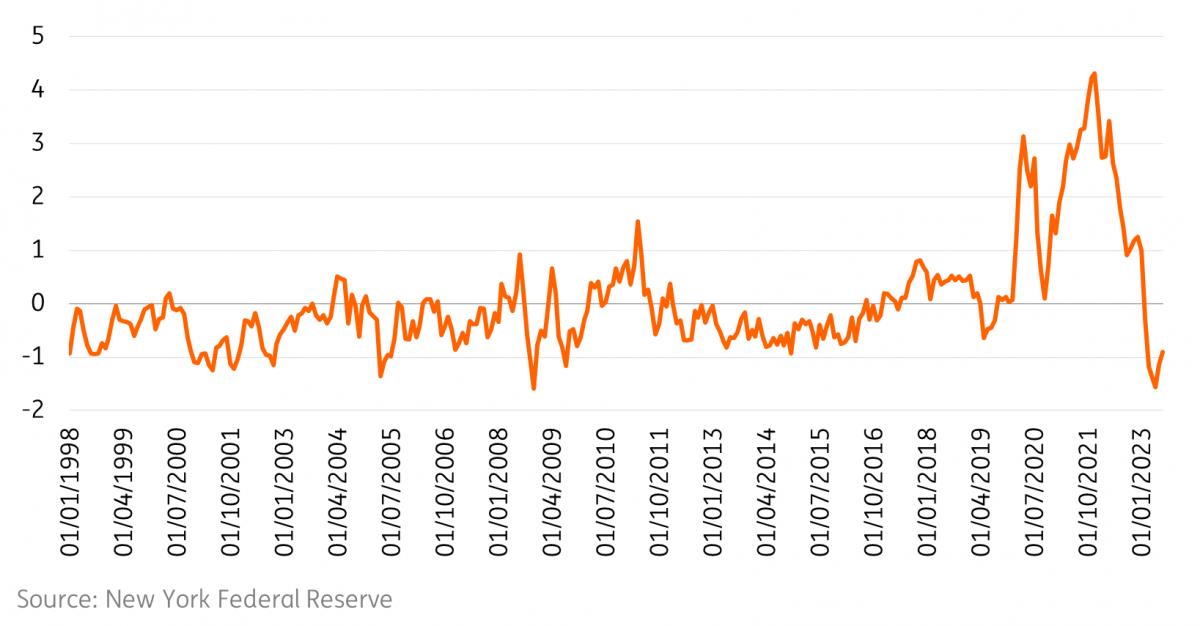
In addition to the Covid shock, rising geopolitical tensions make fixing pharmaceutical supply chains more difficult. Since the start of the US-China trade war, we have seen less new Foreign Direct Investment in Asia, particularly in China, in strategic sectors, not least pharma. This geopolitical fragmentation makes future reshoring more likely. However, reshoring production will be costly and inefficient.
New FDI in China and Asia is lagging behind 2015 levels
New investments in strategic sectors (2015 = 100)
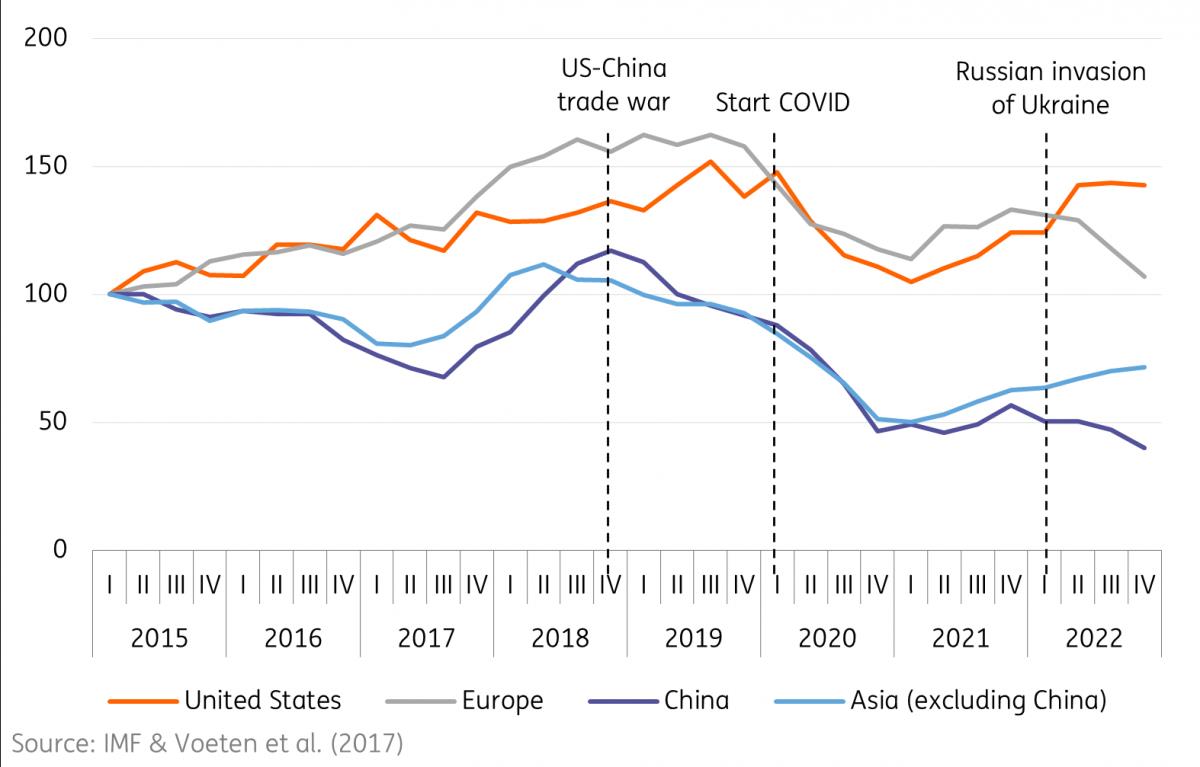
What can European governments do?
So, what can policymakers do to ensure a steady supply of medicines? We see two options.
The first is to stockpile medicine so that when a supply chain disruption occurs, countries or corporations have multiple weeks of stock left. However, this is expensive and pharmaceutical companies and healthcare insurance companies will not want to cover the costs of extra inventory. Hence, governments would need to keep purchasing large amounts of a variety of medicines to prevent possible shortages, which might have unwanted effects on prices and shortages.
A second option is reshoring , which is a popular idea among Western policymakers. Yet, that will also be expensive as labour costs are relatively high in Europe, production facilities need to be built, and personnel need to be trained. Moreover, building supplier networks and generating economies of scale will also prove challenging. And given their thin profit margins, reshoring would likely involve increased costs of generic drugs. That's because right now, only 25% of European demand for generic drugs is actually produced in Europe versus 77% for on-patent medicines. Moreover, competition with overseas manufacturers means that a government subsidy of some sort will be necessary to keep the lights on.
More 'modest' alternatives are multisourcing and nearshoring . Multisourcing entails working with multiple suppliers to make supply chains less fragile, but this is difficult in a concentrated market. Nearshoring entails moving production to geographically and/or politically close countries, yet the question is if this would fundamentally differ from reshoring from a cost perspective.
Besides stockpiling and reshoring, prevention is also important in the long run. Prevention will not solve the medicine shortage, but as societies age and demand for medicines increases, costs will rise regardless of the price of medicine. And given that many diseases are related to lifestyle - just think of the Type 2 Diabetes drug Metformin - governments will also need to emphasise prevention to keep costs manageable.
If Europe wants to be autonomous with regard to medicine production and produce 60% of the demand for important generic drugs at home, it would need to increase production by the amounts in the table below. Of course, there are a lot more generic drugs, and this merely serves as an example to illustrate that for some medications, an increase in capacity should be manageable while it would be a significant challenge for others.
Increased production of generic medicines required (in tonnes)
Additional production in Europe needed if it wanted to produce 60% of demand at home
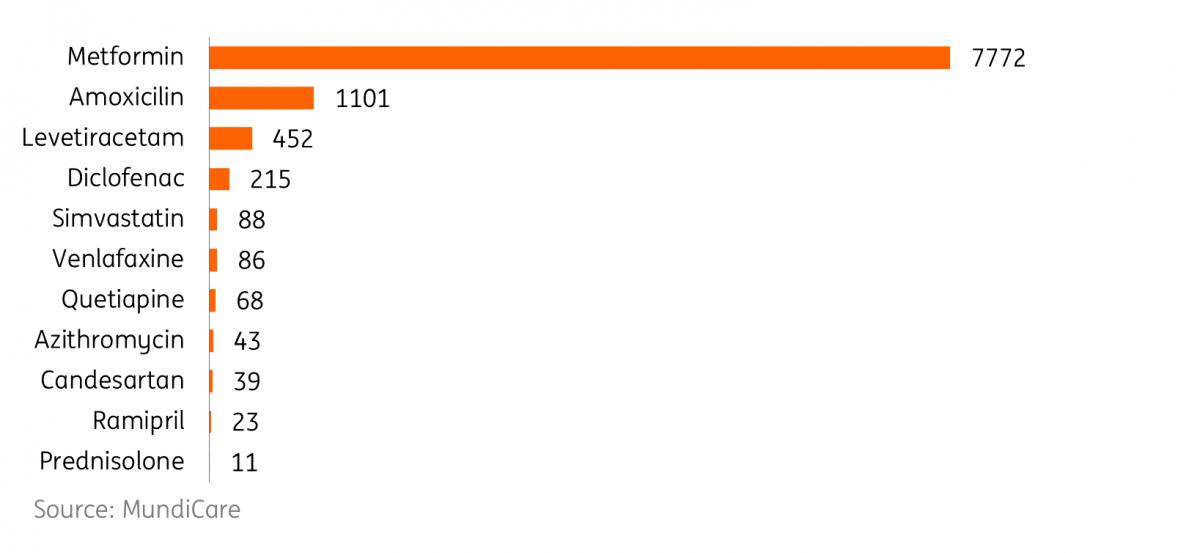
Possible benefits of reshoring
Although reshoring will be expensive, it is possible and has a number of significant benefits. More re-shored production would make global supply chains more local and more resistant to shocks, meaning fewer medicine shortages. Furthermore, Europe already has expertise in medicine production. Austria, Germany, France, Italy, and (non-EU member) Switzerland are important players in the global pharmaceutical trade and produce more sustainably due to higher European regulatory standards than their non-European counterparts.
Paired with Europe's well-educated workforce and technical know-how, reshoring is a viable medium-term solution. An expansion of European manufacturing capabilities would yield more robust supply chains and more sustainably produced medicines. However, this would come at the cost of efficiency, as higher labour costs and investment in new facilities would lead to higher prices for generic drugs.
So, if European governments were to re-shore production, what would this mean for the pharmaceutical sector? Most likely, pharmaceutical companies will be incentivised to de-risk their supply chains by decreasing their dependence on large-scale, highly specialized manufacturing. So, investments in local contract development and manufacturing organisations (CDMOs) will likely be encouraged and increased.
Yet, these companies will not be able to compete with low-cost, large-scale manufacturers in India and China, so guaranteed purchases by governments are also expected. Furthermore, investments by pharmaceutical companies or companies responsible for distribution in strategically located supply depots are likely to make it easier to deal with possible shortages. As mentioned, stockpiling is a viable alternative; this would decrease the medicine shortage in the short run, but the dependence on overseas production would remain. Again, both solutions would increase the costs of generic drugs and will drive up the price of medicines.
We're going to feel worse, before we might feel better
In short, medicine shortages are by and large preventable as production could be moved to more local and slightly smaller facilities, making supply chains more robust. However, due to the efficiency gains made with offshoring, many Western countries have become accustomed to paying a low price for their (generic) medicines. If parts of pharmaceutical production were to be re-shored this would mean paying a higher price for drugs. Yet, this would have the benefit of fewer medicine shortages.
But remember, facilities cannot be built overnight, nor can workforces be instantly trained. There is no short-term solution, and the medicine deficit will persist for at least the next few years. So, it is like the doctor saying: 'You're going to feel a lot worse before you feel better”.
And, whatever happens, things are definitely not looking up for the South Carolina horseshoe crab.
Special thanks go to Pieter Glerum and Tom Jacobs for their help with this report.
MENAFN10102023000222011065ID1107221140
Author:
Diederik Stadig